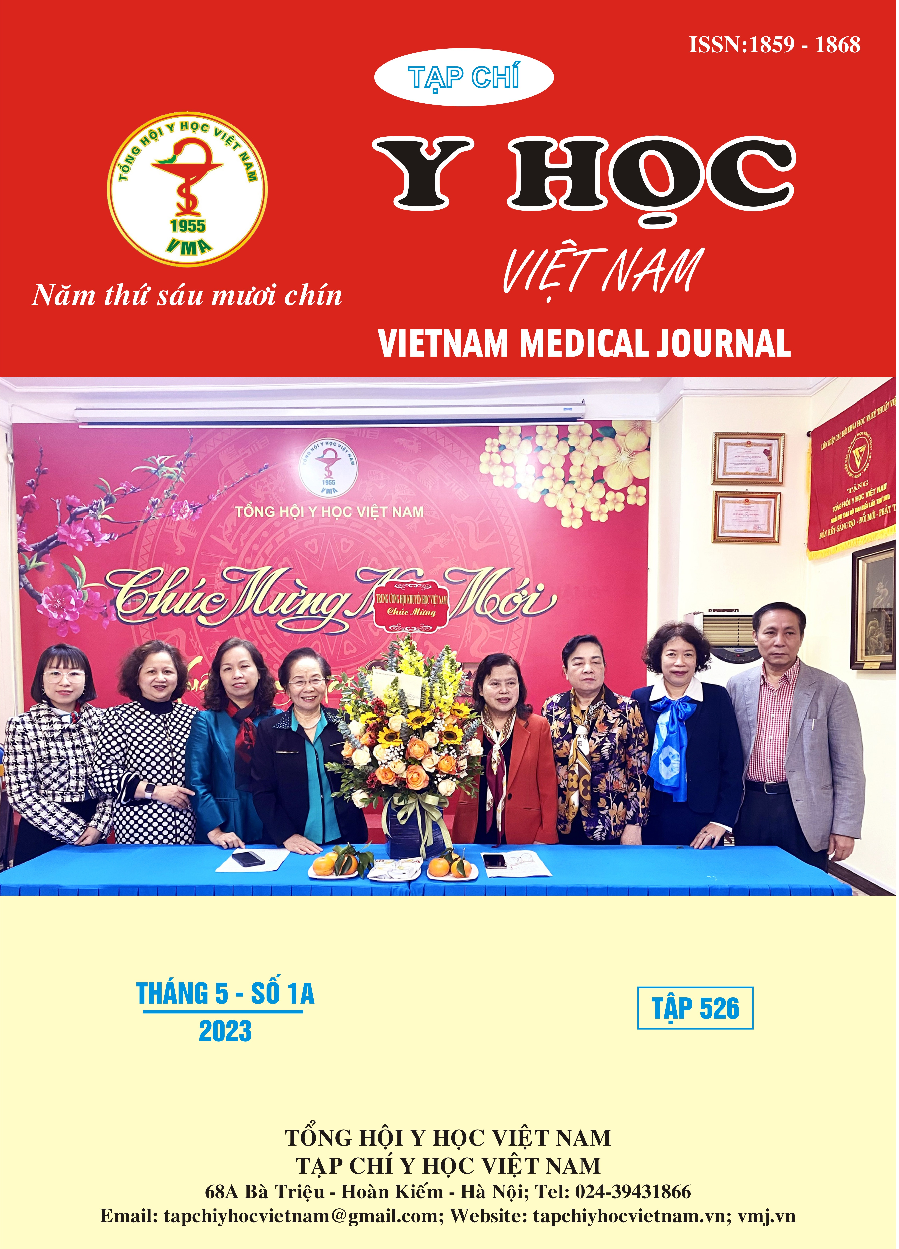EVALUATING THE SUBCLINICAL EFFICACY AND ADVERSE EFFECTS OF ANTIBIOTIC THERAPY USING NEUBULIZED COLISTIN IN THE TREATMENT OF VENTILATOR-ASSOCIATED PNEUMONIA
Main Article Content
Abstract
Objectives: To evaluate the clinical effectiveness, undesirable effects of antibiotic therapy using nebulized Colistin compared with intravenous route in the treatment of ventilator-associated pneumonia caused by Gram(-) bacteria. Methods: Prospective study, clinical trial, randomized controlled group. 60 patients were divided into two groups by random drawing: Nebulized group (KD): use 2MUI colistin mixed in 10ml of sterile saline, nebulize every 6 hours for 30 minutes; Intravenous group (TM): use LD 9MUI colistin, then 2MUI mix 50ml of saline SE intravenously for 60 minutes x 6 hours/time. Collect data on clinical changes of the 2 study groups, process and compare by statistical methods. Results: The initial mean PaO2/FiO2 of the KD group was 259.5 ± 24.3 and the TM group was 250.0 ± 28.8. During the time while patients was treating by colistin, this index of the 2 groups increased gradually on the 3rd, 7th and by the time of10th day, PaO2/FiO2 ratio was 400 ± 54.6 in the KD group and 376.5 ± 72.4 in the TM group. CRP concentration at the start of colistin administration of the nebulized group was 139.9 ± 94.4 mg/l, then on the 10th day it was 40.5 ± 25.6 mg/l. With the TM group, at first, the CRP concentration was 147.6 ± 84.0 mg/l and on the 10th day it was 69.9 ± 56.1. After 14 days of treatment, the CRP of both groups was similar at 41.9 ± 50.2 in the KD group and 41.3 ± 39.1 in the TM group. The incidence of kidney damage in the KD group was 13.3% and the TM group was 23.3%, the difference was not statistically significant (p>0.05). The time when occurrence of kidney damage was not statistically significant between the two groups, most commonly on the 7th day after colistin treatment. There were no adverse events other than renal in both groups. Conclusion: There was no significant difference in the clinical efficacy, adverse effects of antibiotic therapy using aerosol colistin compared with intravenous colistin in the treatment of ventilator-associated pneumonia.
Article Details
Keywords
Ventilator-associated pneumonia, Gr(-) bacteria, Colistin, nebulize
References
2. Markantonis S.L, Markou N, Fousteri M, et al (2009). “Penetration of Colistin into Cerebrospinal Fluid”. Antimicrob Agents Chemother, 53(11), 4907-10.
3. Qin Lu, MD, et al (2012). “Efficacy of High-Dose Nebulized Colistin in Ventilator-Associated Pneumonia Caused by Multidrug-Resistant Pseudomonas Aeruginosa and Acinetobacter Baumannii”. Anesthesiology December 2012, 117, 1335-1347.
4. Ji Young Jang, et al (2017), “Efficacy and Toxicity of High-Dose Nebulized Colistin for Critically Ill Surgical Patients with Ventilator-Associated Pneumonia Caused by Multidrug Resistant Acinetobacter Baumannii”. Journal of Critical Care, (40), 251-256.
5. MJ Perez-Pedrero, M Sanchez-Casado, S Rodriguez-Villar (2011). Nebulized Colistin Treament of Multi-Resistant Acinetobacter Baumannii Pulmonary Infection in Critical Ill Patients. Med Intensiva, 35(4), 266-31.
6. Nguyễn Bá Cường (2017). “Đánh Giá Hiệu Quả và Độc Tính Trên Thận Của Hai Chế Độ Liều Sử Dụng Colistin ở Bệnh Nhân Viêm Phổi Liên Quan Thở Máy”. Luận Văn Bác Sỹ Nội Trú. Đại Học Y Hà Nội


